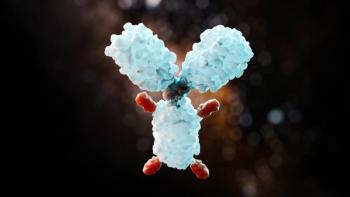B-cell maturation antigen (BCMA)-targeting immunotherapies, such as chimeric antigen receptor T cells (CAR-T) and bispecific antibodies (BsAbs), have helped patients with relapsed or refractory multiple myeloma (RRMM) achieve positive clinical responses; however, their use is often followed by immune responses that are related to T-cell activation or cytokine elevations resulting in cytokine release syndrome (CRS) in some patients. An analysis published in Clinical Pharmacology & Therapeutics compared the CRS profiles in BCMA-targeting CAR-T and BsAB immunotherapies, which were delivered either subcutaneously (SC) or intravenously (IV), in patients with RRMM.
The analysis included research on the incidence and severity of CRS following BCMA-targeting CAR-T and BsAb therapies in patients with RRMM. In addition, the investigators noted that BsAbs were the comparator between BsAbs and CAR-T, whereas the comparator for IV and SC formulations was SC.
The primary outcome for the analysis was CRS incidence and severity, and all grades and incidences of severity were evaluated. In studies that reported CRS at different dosing regimens, such as different priming regimens or different dose levels during a dose escalation phase, the rates were reported in the approved dose (eg, for elranatamab or teclistamab), the recommended phase 2 dose (RP2D) if determined, or the dosing regimen that was selected by the study’s sponsor. Further, when available, information on dosing, priming or premedication regimens, time to onset, duration of CRS, and CRS management was compared across the immunotherapies.
The overall weighted population across all studies was estimated using fixed-effects modeling, which assumes that all studies estimate the same effect and does not take sampling variation into consideration. Further, subgroup analyses were performed to evaluated the different for CAR-T and BsAbs as well as routes of administration for BsAb (IV vs SC).
A total of 1560 patients with RRMM who were treated with BCMA-targeting CAR-T and BsAb therapies across 36 studies were included in the analysis. Of the included studies, 28 were CAR-T studies which included 2 approved therapies (idecabtagene vicleucel and ciltacabtagene autoleucel), and 8 BsAb studies which included 2 approved drugs (elranatamab and teclistamab).
Further, the meta-analysis indicates that the CAR-T studies showed that all grades of CRS were experienced with a weighted proportion of approximately 88% (95% CI: 80–95; I2 = 89%, P value < 0.01), with grade 3 or higher at 7% (95% CI: 80–95; I2 = 89%, P value < 0.01). In the BsAb studies, all-grade CRS occurrences were experienced with a weighted proportion of approximately 59% (95% CI: 49–68, I2 = 84%, P value < 0.01), with CRS grade 3 or higher at 2% (95% CI: 0.0–5, I2 = 76%, P value < 0.01). The subgroup meta-analysis demonstrated a much higher weighted proportion of CRS for those who were treated with CAR-T therapies compared with those who received BsAbs, with all grades experienced by 88% and 59% of patients (95% CI: 80–95 vs. 95% CI: 49–68; I2 = 92%, P value < 0.01), respectively. In addition, occurrences that were grade 3 or higher in 7% and 2% of patients (95% CI: 4–12 vs. 95% CI: 0.0–5; I2 = 79%, P value < 0.01), respectively.
For all included BsAbs, all IV routes and 3 routes of SC administration—alnuctamab, elranatamab, and teclistamab—were evaluated. The investigators found that the incidence of any grade CRS was comparable between IV and SC administration (59% [95% CI: 45–74] vs. 58% [95% CI: 43–73], respectively; I2 = 84%, P value = 0.17); however, studies that included SC administrations were limited in number (n = 3). Lower incidences of CRS grade 3 or higher were observed with SC-administered BsAb (3 studies, n = 311) compared with IV-administered (5 studies, n = 338; 0.0% [95% CI: 0.0–1%] vs. 4% [95% CI: 0.0–10%], respectively; I2 = 76%, P value < 0.01).
Key Takeaways
- Comparative Analysis of CRS Profiles: The analysis in compares the incidence and severity of cytokine release syndrome (CRS) following B-cell maturation antigen (BCMA)-targeting chimeric antigen receptor T cell (CAR-T) therapy and bispecific antibody (BsAb) therapy in patients with relapsed or refractory multiple myeloma (RRMM). This comparison describes CRS profiles associated with these immunotherapies, providing insights into their safety and tolerability in RRMM patients.
- CRS Incidence and Severity: The meta-analysis reveals that, although both CAR-T and BsAb therapies are associated with CRS, CAR-T therapies present a higher weighted proportion of CRS incidence compared to BsAb therapies, and the severity of CRS, particularly grade 3 or higher, is more pronounced in patients treated with CAR-T therapies. Knowing these differences in CRS incidence and severity between the 2 therapies can be significant for optimizing treatment strategies and managing potential adverse events in patients with RRMM.
- Route of Administration and CRS Management: The analysis also examines the impact of route of administration on CRS incidence and severity, particularly in BsAb therapies administered either subcutaneously (SC) or intravenously (IV). While the incidence of any grade CRS is comparable between IV and SC administration, SC-administered BsAb therapies demonstrate lower incidences of CRS grade 3 or higher.
The IV administration of alnuctamab had resulted in 1 case of grade 5 CRS; however, this was not observed in the SC administration of the treatment. Further, CRS occurrence by dose number administered was reported for 3 BsAbs with the exception of SC teclistamab which demonstrated CRS events in 4.8%, 2.4%, 1.2%, and 3.6% of patients following their fourth, fifth, sixth, and later doses, respectively. In addition, the other 2 BsAbs (either IV or SC alnuctamab as well as SC elranatamab) had reported CRS occurrences that primarily followed either the first or second dose, and there were very few instances with third or later doses.
According to the investigators, the average time to onset of CRS for CAR-T compared with BsAb administration was delayed (5 days vs. 1 day, respectively), and the median duration was longer (5 days vs. 2 days, respectively). Additionally, the use of premedication regimens—such as corticosteroids, antihistamines, and antipyretics—was reported by 6 BsAb agents, whereas these were not used to reduce CRS severity in those who received CAR-Ts. Further, patients treated with CAR-T therapies were treated with tocilizumab (44%) and corticosteroids (13%) to manage CRS severity, compared with those who received BsAb agents (25% and 13%, respectively).
The investigators note that analysis limitations include the restriction of only using published research, lack of uniformity in CRS grading systems, and studies that were not inclusive or comprehensible of all details. In addition, the authors emphasize that there were varying dosages and priming or fractionation schemes that were pooled together in the analysis which could be limiting.
Reference
Soltantabar, P, Sharma, S, Wang, D, et al. (2024), Impact of Treatment Modality and Route of Administration on Cytokine Release Syndrome in Relapsed or Refractory Multiple Myeloma: A Meta-Analysis. Clin Pharmacol Ther. doi:10.1002/cpt.3223

















































































































































































































